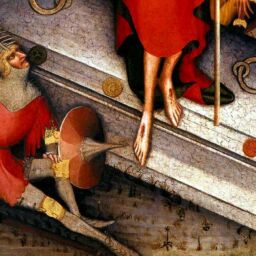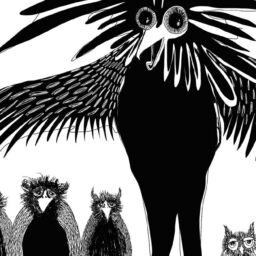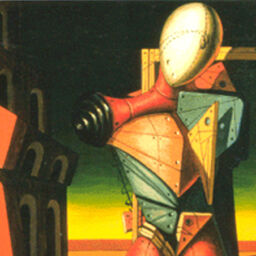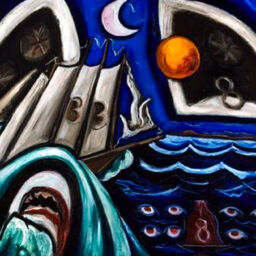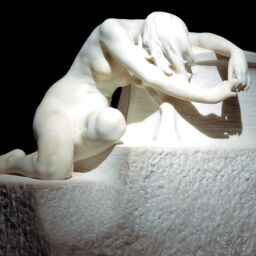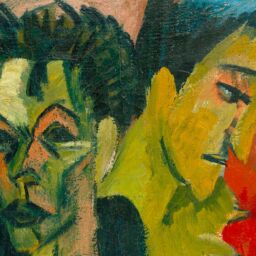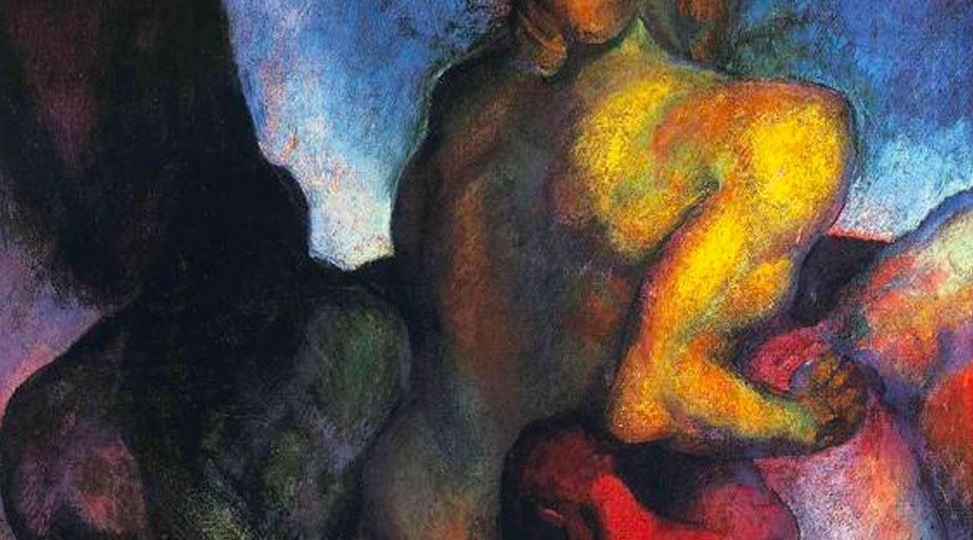
Self-Alienation
The Transformation of Excessive Introversion
Zachary Kampf, April 4, 2018
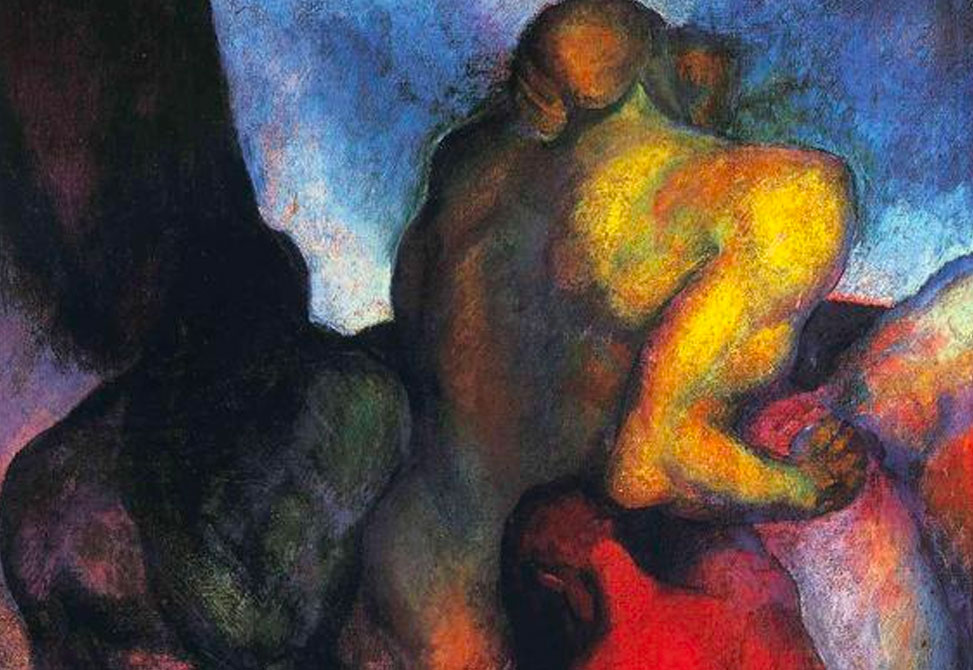
Much like the denizens of the deep from ancient myths and stories, extraterrestrial visitations to our modern consciousness paradoxically evoke fantasies of both salvation and destruction. In his 1958 commentary on the widespread flying saucer sightings, titled “Flying Saucers: A Modern Myth of Things Seen in the Skies,” Jung (1970/2014) suggested that the celestial images exhibited mandala-like characteristics and therefore represented images of the Self: the psychological principle of order, wholeness, and the totality of the personality, both conscious and unconscious. Jung felt that such an experience of the Self could be attributed to “an emotional tension having its cause in a situation of collective distress or danger, or in a vital psychic need” (¶ 508). The term distress is certainly apropos to the period of time following two world wars and facing the ever-looming threat of the Cold War. It was this psychological tension that Jung felt incited the compensatory images of order and wholeness from the unconscious, which were not only projected into the atmosphere as UFOs but also projected onto the big screen of the cinema.
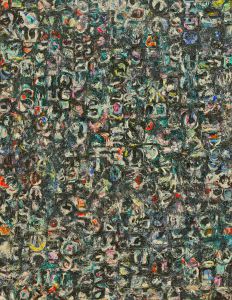
Contrary to these earlier, more optimistic alien visitations, Slater (2008) noticed a recent shift in the collective imagining. Alien depictions in films like Starship Troopers, Alien, and Independence Day are more parasitic than redemptive. Rather than single visitors, these insect-style aliens—often portentously merged with their own technology or machinery—swarm in massive colonies and threaten to overwhelm humankind. If, as Jung (1970/2014) suggested, these alien images are personifications of the Self, arising out of a tension of opposites that might otherwise tear the psychic whole asunder, then what is the significance of this shift in imagery from savior to assailant? According to Slater (2008),
The insect-alien appears to reflect our increasing dissociation from the lower animality of being. … On a psychic level, the monster indicates the prospect of instinctual forces shaking free of their normal channels of expression and running amok, fragmenting consciousness and swallowing all human proportionality—a prospect invoked whenever we cross into unmapped terrain. (pp. 191-193)
Psychologically, crossing into unmapped terrain can mean venturing outside of habitual attitudes or typical modes of conscious orientation. This exploration of repressed or unrealized aspects of the psyche is fundamental to Jung’s notion of individuation, the ego’s gradual development into an approximation of the Self. In consideration with Jung’s theory of psychological types, this process of discovery is to some degree structured by one’s dominant mode of conscious functioning because it requires one to move into less-developed functions of the personality. According to Marie-Louise von Franz (1971/2013), it is the inferior function that operates as a “door by which the shadow, the animus or the anima, and the personification of the Self come in,” which are, therefore, able to “enlarge consciousness and bring forth a new attitude” (p. 72). What insights, then, might the application of typology provide regarding these parasitic Self-images and their role in the development of consciousness and the evolution of the personality?

Heroic Thinking

It quickly becomes apparent that Levinson is excessively introverted. His initial appearance in the film occurs during a chess match with his father, and befitting of an INTP, his very first line is “I’m thinking.” His preference for the inner world of concepts and ideas is immediately recognizable; he is clearly more concerned with his own strategy than indulging his father’s small talk. Shortly after this scene, we again see his detachment from people and the external world. When a coworker asks why his beeper was not turned on, Levinson simply replies, “It was turned on. I was ignoring you.” Aloof, he casually rides his bicycle through the office while everyone around him is in a panicked uproar over a problem with the cable signal. Of all the commotion, only two things capture his attention: someone’s failure to recycle aluminum cans—to which he responds with an out-of-proportion rage, an expression of his demonic introverted feeling (Fi)—and an anomaly in the satellite signal, a problem which he enthusiastically begins to analyze. Levinson becomes so fixated with solving the satellite enigma that he is completely oblivious to the eerie mood settling over the room as his coworkers silently witness the breaking news of the alien arrival.
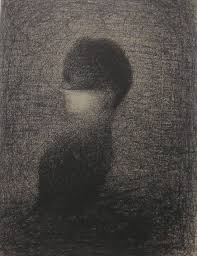
Following Beebe’s model, the auxiliary function operates as an archetypal parent. Given that Levinson leads with an introverted judging function, his secondary function must be one of extraverted perceiving. Considering he will not drive a car, is constantly getting airsick, and often mocks various sensual indulgences like cigar smoking, it is unlikely that Levinson receives much positive parental influence from his extraverted sensing (Se). He is, however, a portrait of what Jung (1921/2014) described as “speculative thinking forging ahead with intuition” (¶ 669). Levinson’s reliance on introverted thinking supported by extraverted intuition (Ne) is what makes him an INTP, “perhaps the most intellectually profound of all the types” (Myers & Myers, 1995, p. 90). According to Sharp (1987), extraverted intuition “strives to apprehend the widest range of possibilities inherent in the objective situation” (p. 59). On several occasions when Levinson’s thinking is stuck or becoming too narrow or dogmatic, his intuition, like a wise father figure, grabs hold of something in the environment and redirects him toward a larger vision.
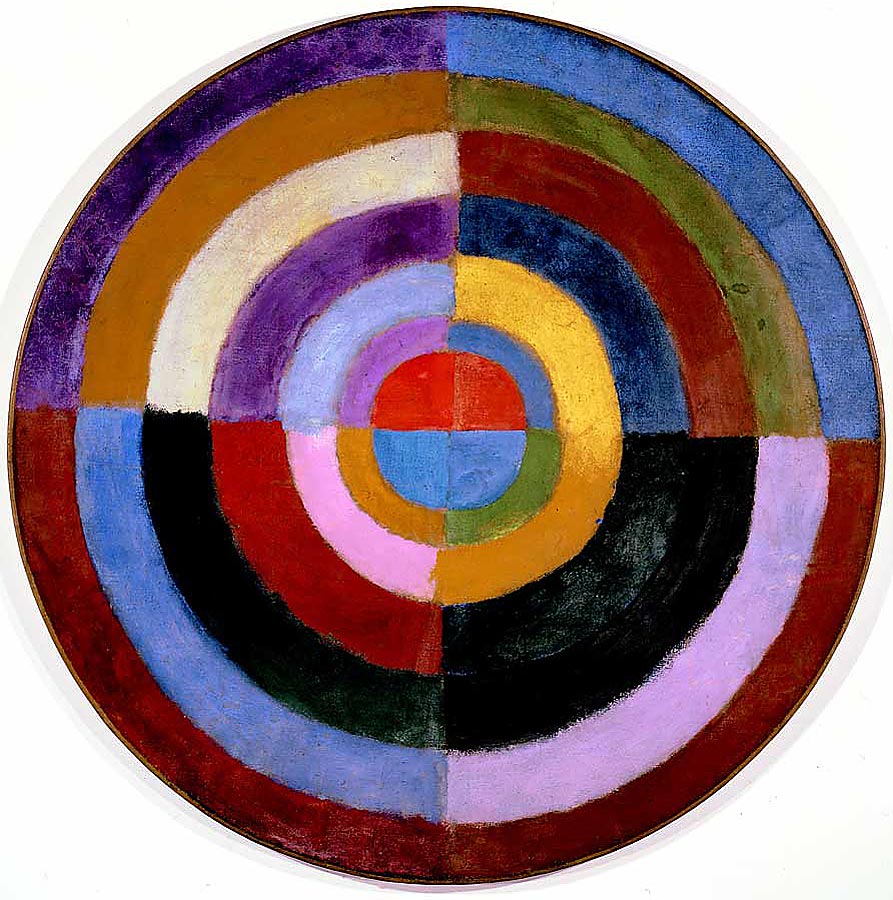
In the third position—after his parental intuition and less available to consciousness—is Levinson’s introverted sensing (Si). Introverted sensing relates primarily to the personal subjective experience of the physical sensations, the memories and internal images that “constitute a psychic mirror-world” of external reality (Jung, 1921/2014, ¶ 649). In the third position, this function is governed by the puer aeternus archetype, the eternal youth. Three years after his divorce, Levinson still wears his wedding ring, indicative of the puer demand that the memory and internal experience of that relationship live on forever. The puer’s aversion to responsibility can also be observed in Levinson’s refusal to find an occupation more suitable to his eight-year education at MIT—a sore spot in several of his relationships.
Extraverted feeling (Fe) is in the fourth position, the anima. Consciousness has little access to the inferior function, and so, according to von Franz (1971/2013), it remains slow, infantile, and primitive. However, this lack of calculation in feeling also means that it has a kind of childlike, undeveloped genuineness to it. Without differentiation, matters of feeling are perceived as black and white, and there will be either profound attachment or intense aversion to the object in question. When the anima takes the form of extraverted feeling, the bridge to the unconscious paradoxically leads outward to external objects by imbuing them with mythological qualities and symbolic significance. Hence, Levinson is likely to discover his own deepest realities in relationship with others, provided he is able to integrate the anima projections. These anima dynamics are most clearly evident in Levinson’s relationship to his ex-wife, Constance. His feelings toward her demonstrate what von Franz (1971/2013) described as a “sticky, dog-like attachment that, especially to the beloved, is not always amusing” (p. 58). It is through this painful attachment that Levinson is able to access the functions that lie in the ego’s shadow: the fifth, opposing personality position of extraverted thinking (Te); the senex carrying introverted intuition (Ni) in the sixth; the trickster extraverted sensing (Se) in the seventh; and finally, the demonic introverted feeling (Fi) in the eighth position.
Ego Breakdown
Though we are given little in terms of Levinson’s background story, the film hints at several recurring issues that may be contributing to the emotional tension we would expect to see when alien Self-images appear. Firstly, Levinson is unable to accept his divorce and move on, refusing to even discuss the idea with his father. He also has lofty ideals. He claims he is always trying to save the planet, but his attempts to do so fall drastically short of his intellectual potential. His education and intuitive ingenuity give him immense potential for innovation, yet his efforts at sustainability often manifest merely as snarky comments about styrofoam cups or sarcastic outbursts at people who do not recycle. He presents as a resentful underachiever, lacking ambition and unable to launch his powerful ideas into practice. When his intellect is recognized and President Whitmore requests his aid in the military effort against the aliens, Levinson belittles himself and shrinks away from contributing.
While some might call this response humility, it can also be understood as self-deprecation, a rather insidious form of ego inflation. According to Jung’s (1921/2014) description,
It is a characteristic peculiarity of the introvert … to confuse his ego with the self. … Should he become neurotic, it is the sign of an almost complete identity of the ego with the self; the importance of the self is reduced to nil, while the ego is inflated beyond measure. (¶ 623-625)
Ego inflation is often confused with arrogance, but that is only one form inflation assumes. As an introvert, to the extent that Levinson’s ego identification with the Self (inflation) creates an overvaluation of subjectivity, his relationship to objects takes on a primitive or infantile quality; objects are feared as having the power to overwhelm him. According to Jung (1921/2014), the introvert then “shrinks from making himself or his opinions felt, fearing that this will only increase the object’s power” (¶ 627). Thus, Levinson’s humility is not authentic, but an autonomous defense mechanism protecting him from his irrational fear of the object. As a result of this shrinking inward, Jung observed that “a compensatory relation arises in the unconscious which makes itself felt as an absolute and irresistible tie to the object” (¶ 626). Levinson is then caught in a crippling tension of opposites; the more he attempts to recede inward, the more compulsive his outward attachments become, and the tighter he fetters himself to a dead end job and a non-existent relationship.
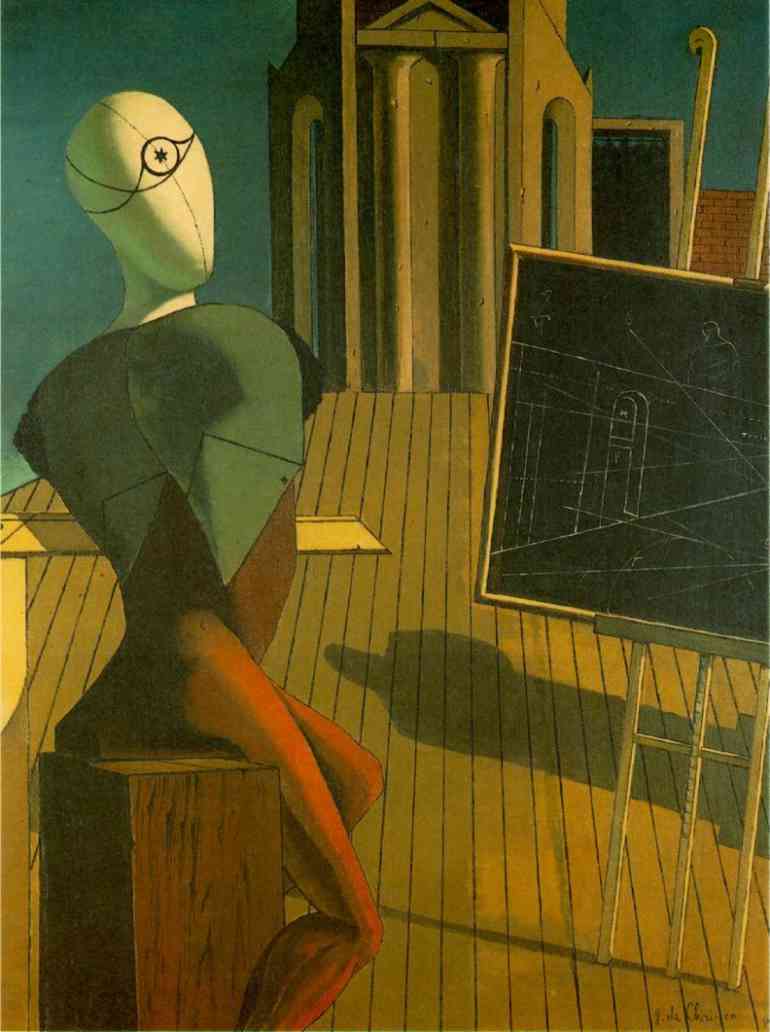
Demonic Developments
The first key moment of Levinson stepping into his non-preferred functions occurs when his auxiliary extraverted intuition scans the binary code in the satellite signal and envisions the possibility of an alien attack. This vision marks the beginning of his descent through the functions toward a confrontation with the unconscious. He then seeks out his father to drive him to Constance (just as the ego gains access to the inferior function through the development of the auxiliary function). Constance is an ambitious woman who has worked her way up the political ladder and works closely with the president. She carries Levinson’s anima projections and represents the unlived side of himself that would put his ideals into action. She also embodies conscious extraverted feeling characteristics (Levinson’s inferior function), acting as the mediator between the president and the press and constantly seeking to create harmony in the external environment. She is thus ripe with symbolic significance for Levinson’s own inner life. Just as the anima forms the bridge to the shadow functions—the opposing personality, senex, trickster, and demon—she gives Levinson access to the president, who, as the figurehead of the militant U.S. government, exemplifies extraverted thinking and represents Levinson’s opposing personality. Needless to say, Levinson and President Whitmore do not get along. Through his involvement with the President and executive staff, Levinson is introduced to Steven Hiller, the Air Force pilot who lives for adrenaline and exemplifies extraverted sensing—Levinson’s trickster function.
When the crisis is beginning to look hopeless, these central characters converge at Area 51, a secret military base that can be understood as a liminal space—not entirely of this world, yet not entirely extraterrestrial. Here we see more of Levinson’s shadow functions emerge. In this liminal space, his demonic introverted feeling—previously only expressed as sarcasm around sustainability or raging outbursts at the suggestion of using nuclear weapons—now begins to morph into daimonic inspiration. According to Beebe (1992), introverted feeling concerns one’s subjective feelings and values, weighing actual events against an ideal archetypal image. In the shadow, this feeling becomes “rageful, anxious, and sullen. It may withdraw all support for attitudes it has decided are simply wrong” (p. 136). The archetypal energy associated with the eighth function can bring out the most destructive aspects of an individual’s personality.
When the president issues the order to use nuclear weapons against the aliens, Levinson falls into his trickster extraverted sensing and begins drinking. Characteristic of the trickster’s duplicity, this volatile state of intoxication at one and the same time drives him into demonic despair (Fi) and allows him to access his tertiary introverted sensing. In an uninhibited conversation with Constance, he muses over memories, expressing and differentiating his subjective experience of their relationship so that the impressions left upon him are no longer locked away in the depths. As he grows more inebriated and unconscious, he sinks into his most violent, morbidly sarcastic state, trashing the room and ranting: “We gotta burn the rainforests, dump toxic waste, pollute the air, and rip up the ozone. Maybe if we screw this planet up enough, they won’t want it any more.” This single statement demonstrates both the intense despair of demonic introverted feeling and the trickster’s unorthodox and haphazard means of bringing about salvation, expressed in the physical outburst of the extraverted sensing function.
Levinson’s demonic/daimonic temper tantrum calls in his parental intuition, instigating the film’s peripeteia—the moment when his father inadvertently inspires the idea to use the aliens’ own communication signal against them by planting a virus in the mother ship. With more conscious access to his shadow functions, Levinson is now ready to pull back his anima projections and participate in a genuine confrontation with the aliens (i.e., the Self). Before this moment, his central dilemma could be summarized by Jung’s (1921/2014) description of excessive introversion: “Although [the introvert] will shrink from no danger in building up his world of ideas, … he is nonetheless beset by the greatest anxiety if ever he has to make it an objective reality” (¶ 634). However, no longer requiring Constance to carry his unlived ambition, Levinson finally sets out to put his own ideas into action. The ego-Self dialogue begins; Levinson’s virus theory (introverted thinking) allows for cooperation with the president’s military strategy (extraverted thinking). He must also learn to work with his trickster extraverted sensing by flying in an alien craft with Captain Hiller and deceptively entering the mother ship to plant the virus. The plan is successful, humanity finds salvation after all, and Levinson returns from the confrontation transformed.
Integration
The film’s concluding images of Levinson are significant. Having safely landed from their mission, Levinson and Captain Hiller are found walking out of the desert, smoking their victory cigars side-by-side in confident stride, awaiting the embrace of their lovers (Levinson and Constance have rekindled their relationship at this point). An historic phallic symbol, the cigar has stood for assertiveness, ambition, and power. It appears throughout the film among the more extraverted and action-oriented characters, particularly those in the military. While in the mother ship, Levinson had confessed to Captain Hiller that he had always believed things like cigars would kill him, symbolically admitting his fears around bringing ideas into objective reality. However, after his confrontation with the aliens, Levinson responds to his father’s light-hearted jab at the cigar in his mouth by smiling and stating, “I could get used to it.”

References
Beebe, J. (1992). Identifying the American shadow: Typological reflections on the Los Angeles riots. Psychological Perspectives, 27, 135-139.
Beebe, J. (2006). Evolving the eight-function model. Australian Psychological Type Review, 8(1), 39-43.
Crisis. (n. d.). In Online etymology dictionary. Retrieved from https://www.etymonline.com/word/crisis
Jung, C. G. (1921/2014). Psychological types (R.F.C. Hull, Trans.). In H. Read et al. (Series Eds.), The collected works of C.G. Jung (Vol. 6, pp. 330-407). Complete digital edition.
Jung, C. G. (1970/2014). Civilization in transition (R.F.C. Hull, Trans.). In H. Read et al. (Series Eds.), The collected works of C.G. Jung (Vol. 10). Complete digital edition.
Myers, I. B., & Myers, P. B. (1995). Gifts differing: Understanding personality type. Mountain View, CA: Consulting Psychologists Press.
Sharp, D. (1987). Personality types: Jung’s model of typology. Toronto, ON: Inner City Books.
Slater, G. (2008). Aliens and insects. In D. P. Slattery & G. Slater (Eds.), Varieties of mythic experience: Essays on religion, psyche and culture (pp. 189-207). Carpinteria, CA: Daimon Verlag, Einsiedeln, and Pacifica Graduate Institute.
von Franz, M-L. (1971/2013). The inferior function. In J. Hillman & M-L. von Franz, Lectures on Jung’s typology (pp. 9-91). Putnam, CT: Spring Publications.
Images
Benton, T. H. (1916). Three figures. Retrieved from wikiart.org
De Chirico, G. (1915). The profit. Retrieved from wikiart.org
Delaunay, R. (1913). Premier disque. Retrieved from wikiart.org
Krasner, L. (1949). Untitled. Retrieved from wikiart.org
Lajos, V. (1935). Dark self-portrait. Retrieved from wikiart.org
Leger, F. (1955). Study for the two lovers. Retrieved from wikiart.org
Seurat, G. (1883). Voilette. Retrieved from wikiart.org





